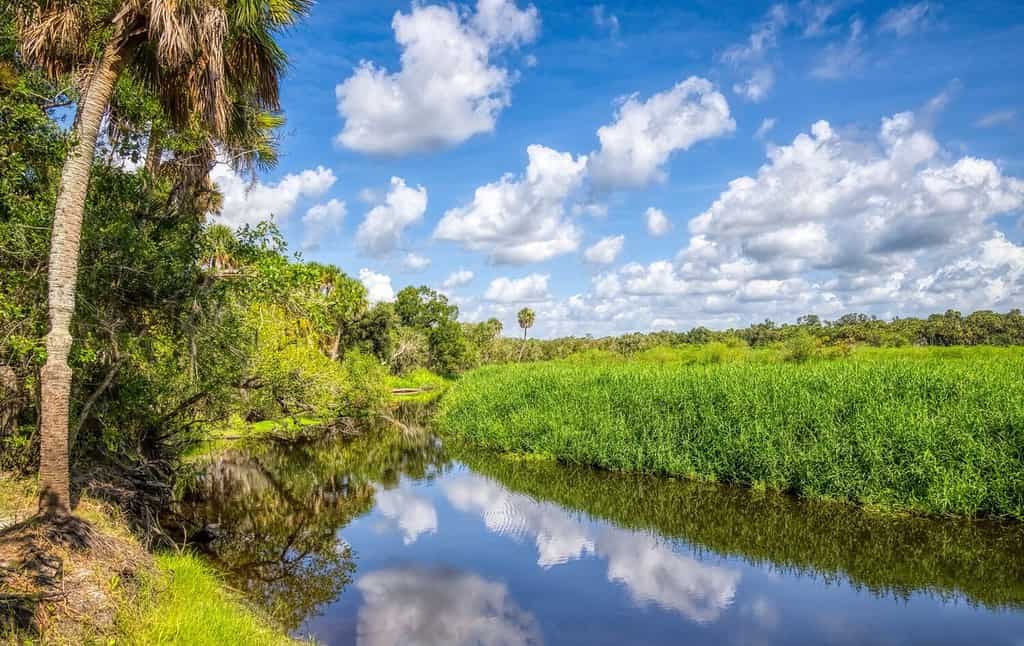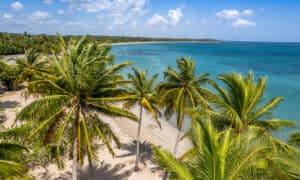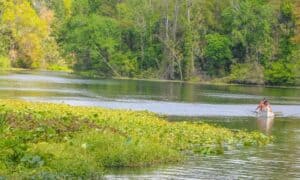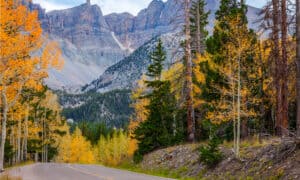If you’re in Sarasota, Florida, you need to spend at least a day at Myakka River State Park. The 81-year-old sprawling park is important to the state’s heritage and is home to abundant wildlife. Visitors can tour the incredible state park in various ways to see these animals up close and personal in their natural habitats. Before planning your visit, learn more about Myakka River State Park, including the ideal visiting time for different activities and the best way to see the alligators.
Myakka River State Park

Sarasota County, Florida is home to Myakka River State Park.
©Jim Schwabel/Shutterstock.com
Myakka River State Park is over 37,000 acres in Sarasota County, Florida, with more than 55 square miles of wetlands. It’s one of the largest and oldest state parks in Florida. Visitors travel across mesic flatwoods and through marshes to see birds and other impressive wildlife. The larger conservation area of the park is known as “Myakka Island,” which includes over 80,00 acres of conservation lands within Sarasota and Manatee County.
Myakka River State Park is named after the scenic Myakka River that flows through it. Only part of the river is contained within the park, along with the Upper and Lower Myakka Lakes that are fed by the river. These natural waterways are an essential resource for the native plants and animals that live along the banks.
One of the most popular residents is the state reptile – the American alligator. You can spot them basking in the sun along the riverbanks to stay warm.
The Best Time to Visit Myakka River State Park

The best time to visit Myakka River State Park is from late fall to early spring because of the mild weather.
©Andriy Blokhin/Shutterstock.com
Myakka River State Park is open from 8 AM until sunset every day of the year. Many people come to see the alligators, hike the trails, or go birding. However, there are nearly a dozen ways to experience the park. Animals roam free throughout the park. As you drive down the main road, you can see deer, wild hogs, and raptors.
The best time to visit Myakka River State Park is in winter. The trails are dry rather than flooded and muddy. It’s also the best time to see the park’s famous residents huddled together in large groups or roaming freely. But don’t worry, you can enjoy their presence from a safe distance. Although alligators are considered dangerous due to their speed and strength, they are unlikely to attack you. They will leave you alone unless you taunt them with food or encroach on their territory. In fact, they’re naturally afraid of humans.
Enjoy birding and alligator watching when winter water levels are low from January to March. But if you want to see the manatees, the best time to visit is from mid-November to the end of March. The best spots to find them are on the Lower Myakka. On another day, you should visit the Warm Mineral Springs in the Myakka River Watershed, where they love to winter.
What to Know Before You Visit Myakka River State Park

Alligators are the must-see species at Myakka River State Park.
©Danita Delimont/Shutterstock.com
There’s something for everyone at Myakka River State Park. Whether you paddle down the river or hike along one of the numerous trails, you’re guaranteed an up-close look at the surrounding wildlife.
Fees
Admission is $4 for single-occupant vehicles and $6 per vehicle with two to eight people. Bus, boat, and tram tours are available at rates according to age and military or first responder status. Tour departure times are 9 AM, 11 AM, 1 PM, and 3 PM daily. Visitors can rent spots on the campground starting at $26 per night or cabins at $70 per night. Beach cruisers begin at $15 for two hours or a tandem cycle at $30 per two hours. Lastly, canoe rentals start at $20 for an hour.
Hiking
The Myakka State Forest is well-known for its incredible hiking system. There are over 40 miles of trails that nature lovers traverse by foot, hoof, or wheel. Many trails provide access to fishing, boating, canoeing, kayaking, and camping spots.
One of the most popular walkways is the Myakka Canopy Walkway. The treetop canopy walkway became North America’s first public treetop trail in 2000. It’s not much of a trail, but it’s 25 feet above the ground and spans 100 feet to the 74-foot tower overlook, giving you a bird’s eye view of the park.
However, experienced hikers may enjoy the challenge of the Myakka Hiking Trail. The 38.9 loop goes through prairies, grasslands, and more and is maintained by volunteers from the Florida Trail Association. The best time to get in touch with nature along the Myakka Hiking Trail is during a winter afternoon when it’s sunny yet cool out, and you can avoid the unpredictable rainy season thunderstorms.
Additional Recreational Activities
Myakka River State Park provides numerous recreational opportunities. In addition to hiking, canoeing, and kayaking, visitors can enjoy camping, off-road bicycling, horseback riding, fishing, and small-game hunting.
Primitive campgrounds are scattered along the waterways, which you can only reach by hiking or paddling. The challenge to get to these spots is worth it for a peaceful night under the stars. Overall, there are about 80 campsites throughout the park to accommodate different camping experiences.
Birding
Birding is a popular activity along the river and lakes at Myakka River State Park. One of the most commonly spotted birds is the anhinga. You can find them proudly drying their wings after a successful hunt over the water. Ospreys are another popular resident that flies high above the water. But you’ll also see many songbirds and wading birds. Bring a pair of binoculars to spot as many birds as possible, including the rare roseate spoonbill with its distinct pale and pink feathers. You can also check in with the on-site Bird Naturalist from November to April.
Vulture Encounters
Believe the “Warning: vultures may cause damage to vehicles” signs. Vultures at the park will eat the rubber trimming off your vehicle while you spend the morning or late afternoon exploring. They might nibble off pieces of your windshield wipers or the weather stripping around your doors or sunroof. However, park rangers shoo them away with a cannon blast-like noise. Don’t worry; no vultures are harmed. They fly into the nearby trees. The noise is more startling to unsuspecting visitors.
The Best Spot to See Alligators in Myakka River State Park

The best place to see alligators in Myakka River State Park is at the Deep Hole sinkhole.
©Andriy Blokhin/Shutterstock.com
There are many spots to see the alligators in Myakka River State Park. You’ll know when you’re close when you see a group of people huddled together, pointing and taking pictures with their phones. However, one of Florida’s most popular sinkholes attracts congregations of the apex predator and dozens of visitors daily.
Deep Hole in Myakka River State Park is an alligator magnet. You can find the alligator hub in Lower Lake, which you can also paddle through by canoe or kayak to see them swimming around. Deep Hole is about 134 feet deep and 200 feet wide. But what else is looming in the murky waters of Deep Hole is somewhat of a mystery because it’s nearly impossible to explore.
The path to Deep Hole is just over 2 miles from the parking lot. The easy trek to Deep Hole brings nature enthusiasts to a wide open clearing with a large water hole where hundreds of alligators live. In summer, they retreat into the water to keep cool, making it hard for visitors to see them. But they come out to bask in the sun’s warmth during the Florida winter — many animals, including wild hogs, gravitate toward water sources during the dry season.
Although Deep Hole is located within the park, visitors need a special permit to enter the area. Keep in mind permits are limited to 30 people per day. So, show up when the park opens to guarantee yourself a spot. The surrounding area is popular for hiking, fishing, and camping.
The photo featured at the top of this post is © Kristi Blokhin/Shutterstock.com
Thank you for reading! Have some feedback for us? Contact the AZ Animals editorial team.






